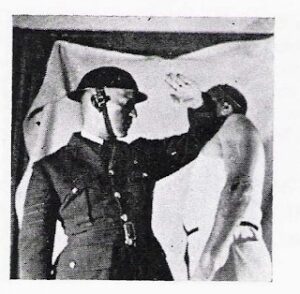Kata or forms can be a divisive subject in martial arts. Some folks love them so much there are actual kata competitions. Bruce Lee was not a big fan. If I recall correctly this was the subject of his comment about worshiping boats. “A boat is just something to get you to the next place. Once you have crossed the river you leave it and move on, you do not stay to worship it”. That was not his exact words, and he may have made this comment about another topic but I think the sentiment he describes is still worth reflection.
Readers of my book or this blog will know of my admiration for Tai Chi. To many people Tai Chi is nothing but a form or kata. This is not actually the case but this is a common perception. The Tai Chi forms have many layers of meaning and application. Just beneath the health and meditative layers the movements train you in a broad range of defensive and counter offensive movements. Many has been a time I have been working a solution to a problem in self-defence and suddenly realised that a particular action is the same as taught in one part of a Tai Chi movement. A “clothesline” across the throat is the hooked palm of single whip, a jerk on the shoulders the elbow dropping of the beginning moves and so on.
Regular readers will know that I have been looking at the wartime Arwrology book recently. In one section, around page 55 a sequence of strikes is shown as a drill and I did think at the time of reading that this was a rather nice basic kata.
This weekend I got to look at a copy of “American Arwrology” by Fred C Bauer. This is one of those books that seem mainly intended to whet a student’s appetite and cause them to want to learn more on a course. Many of the topics and techniques of the original Arwrlogy book are not included, which is a shame since certain techniques I would have been grateful to see described from a different perspective. The book does have some interesting content and insights however, so do not take this to be a negative review.


Bauer devotes a large section to a sequence he calls “D-55”. This is the drill shown on page 55 of the original book. If you have ever undergone parachute training or certain other types of military training you will know that they will often involve long periods of repetition. These movements become so ingrained that when the jump master shouts “in the door” you are there in launch position without really thinking about it. By the time you realise he has said “Go!” you have gone!
Drills like D-55 and other useful katas have the same effect. When you realise an attack is coming your elbow strike, knife hand or palm heel explodes out and hits a target.
D-55 is a very nice drill of honing your basic counter-offensive techniques. It can be performed on empty air but it is also recommended to put some time in using it against a punch bag. The original moves are:
-
-
Right elbow strike, outward
-
-
-
Right knife hand. The previous elbow strike sets the knife hand up.
-
-
-
Left hand, punch.
-
-
-
Left knee strike.
-
-
-
Left elbow strike, inward. Follow through of this sets up an outward elbow strike with the same arm.
-
-
-
Left elbow strike, outward
-
-
-
Left knife hand. The previous elbow strike sets the knife hand up.
-
-
-
Right hand, punch.
-
-
-
Right knee strike.
-
-
-
Right elbow strike, inward.
-
-
-
Back to start and repeat.
-

Bauer does a nice job of illustrating that some of these movements can be changed. In the original book the punch is described as straight from boxing. Bauer’s book shows a low, vertical fist impacting with the first two knuckles. Those of you who have read Jack Dempsey or the section on bone alignment when punching in my book may be puzzled by the latter. I believe this strike is intended for the softer lower area of the body and may use the upper knuckles because of an upward curving action, rather like stabbing a knife up into the diaphragm. I’m a bit above average height so this punch following the knife hand feels more natural as a higher blow and since heads are bony it becomes a palm-heel strike. Following a hand strike with a knee strike from the same side can seem a little awkward for some people so potentially you could swap that over to a strike with the other side knee, incorporating more changes of sides during the drill. My Karate background makes some of these moves with a hikate of the other arm. Knee strikes are often made when hanging on to someone so I make them with a simulated grab and pull back of the “opponent” as the knee strikes.
Drills such as this are not some magic ritual that needs to be performed exactly. Moves can be varied to suit the individual or just for variety.